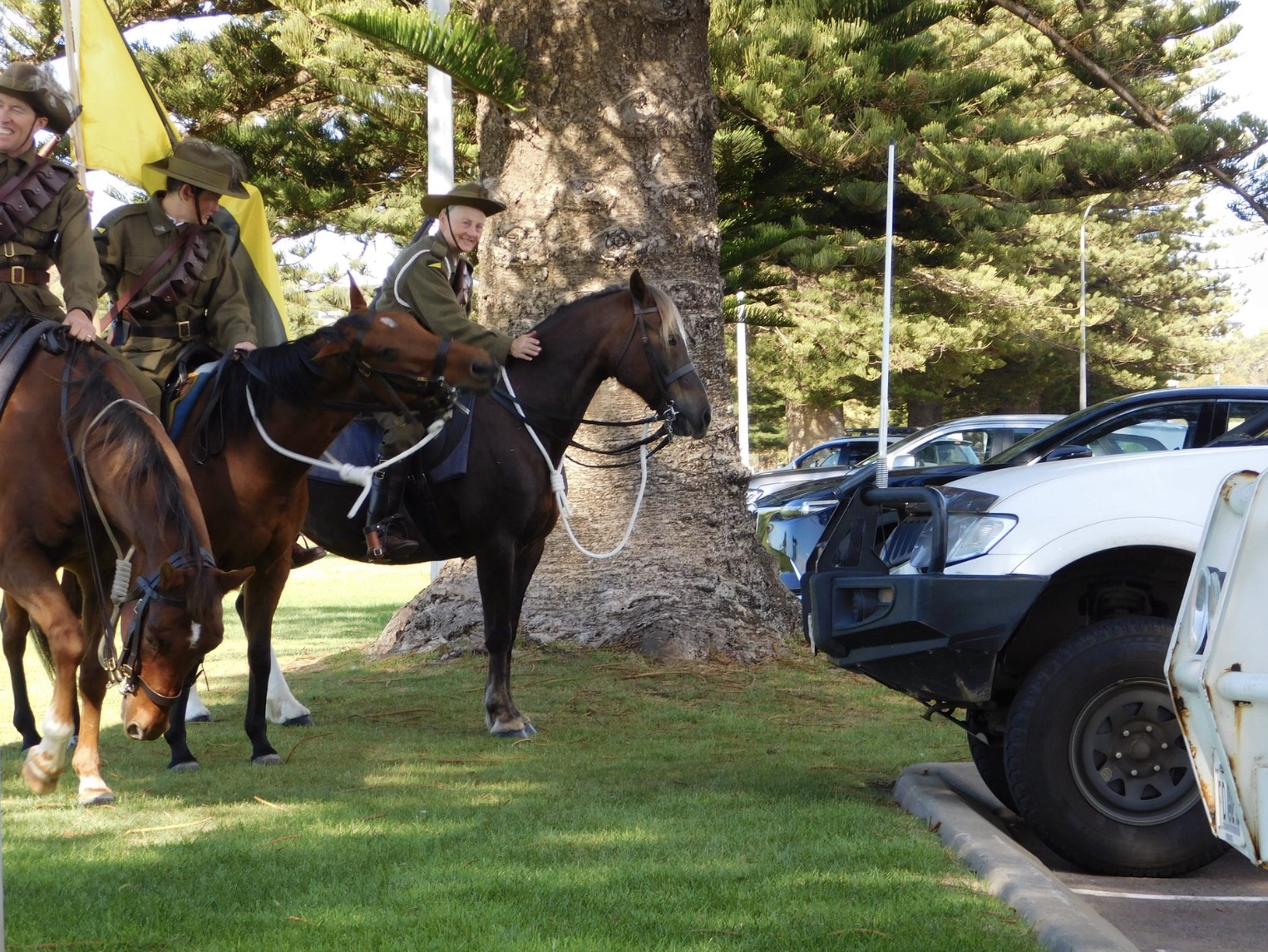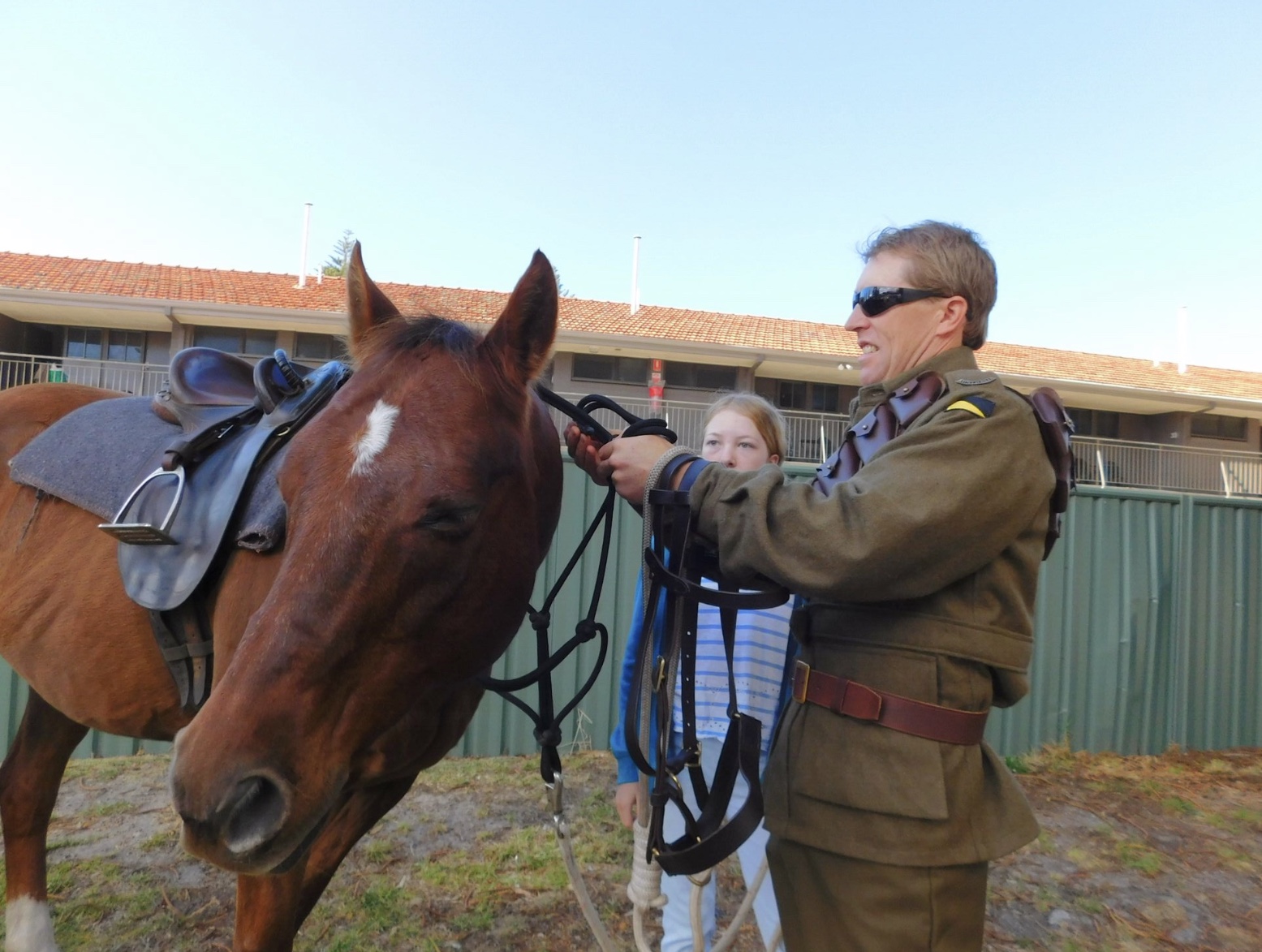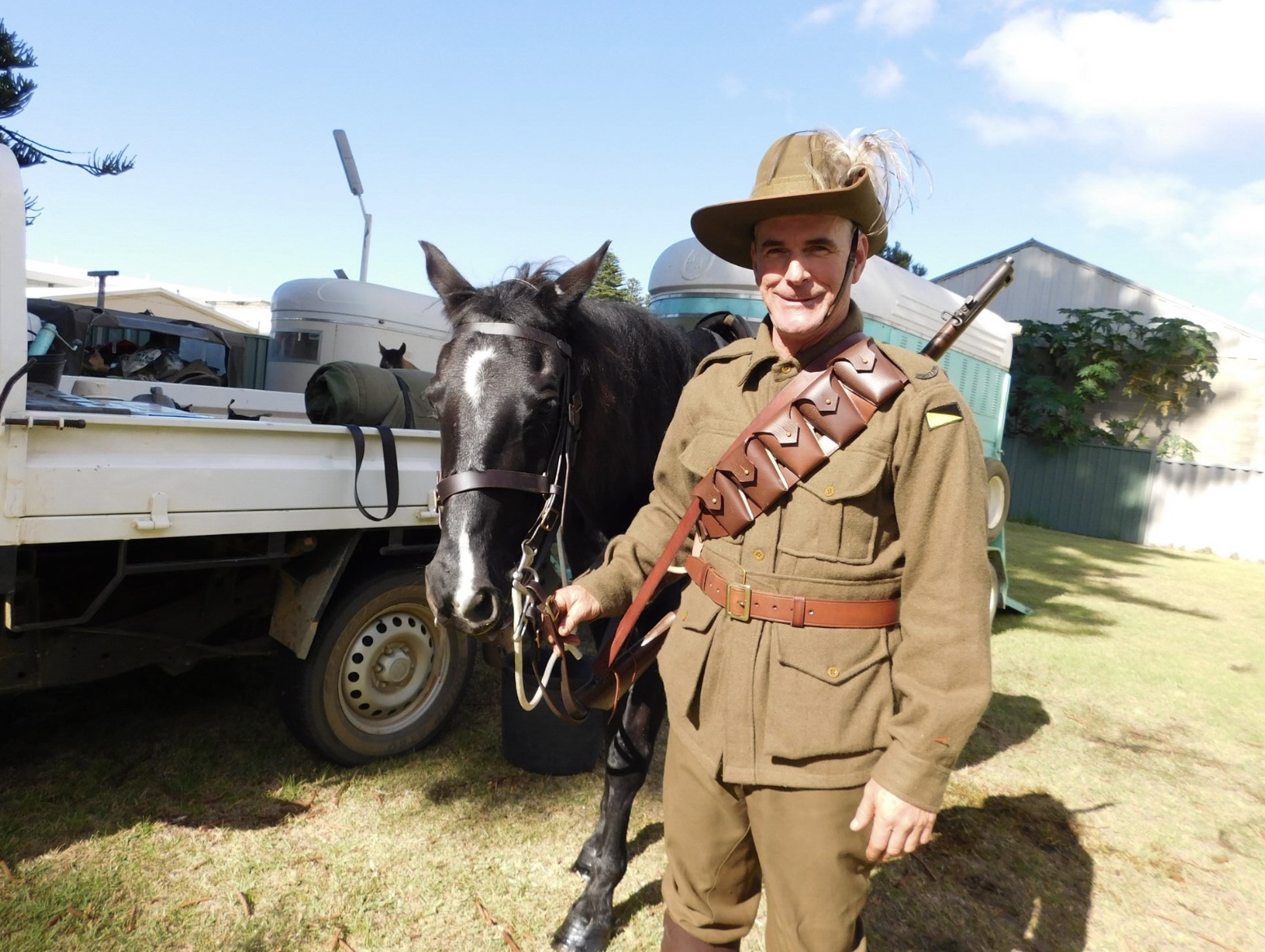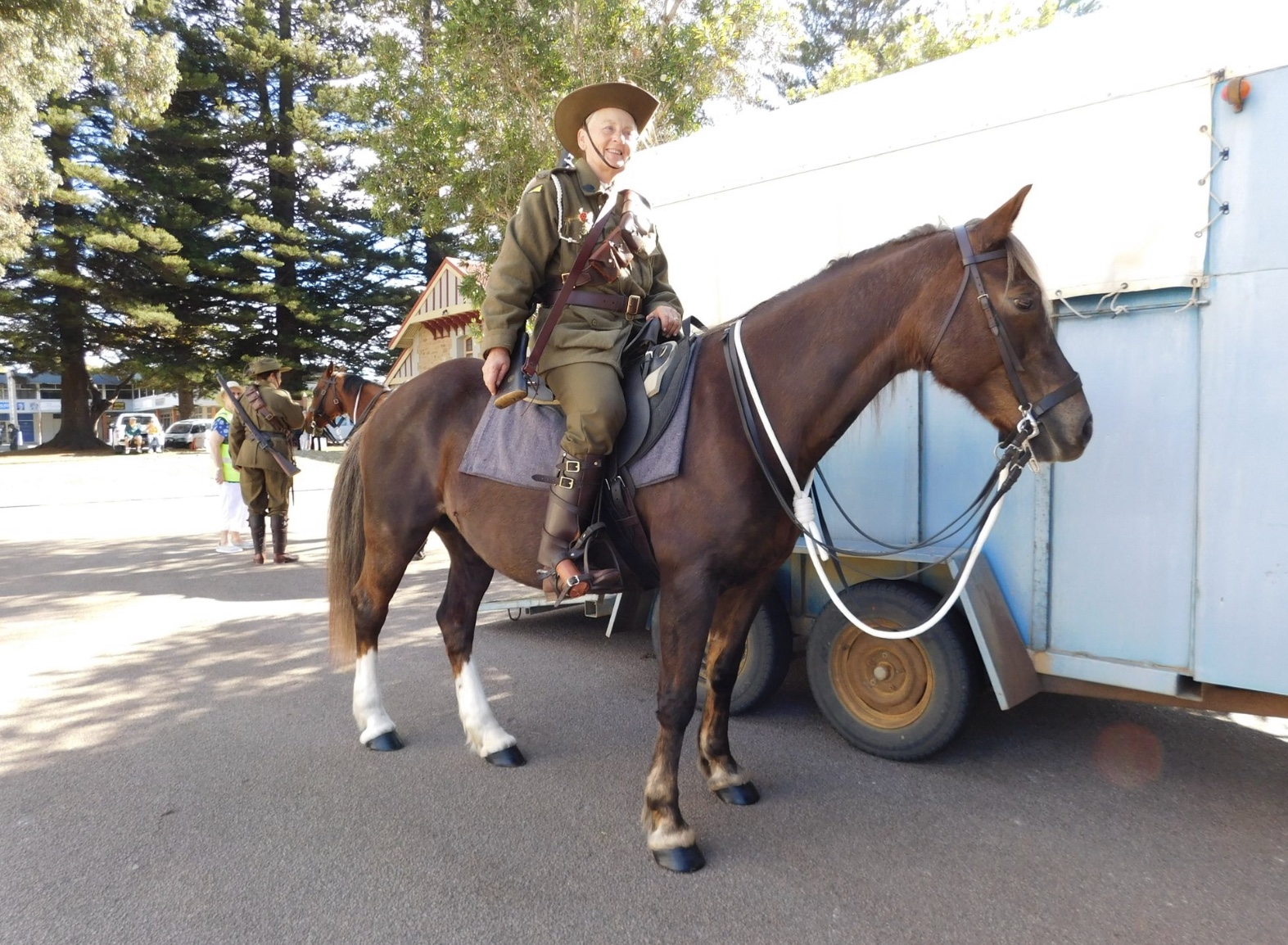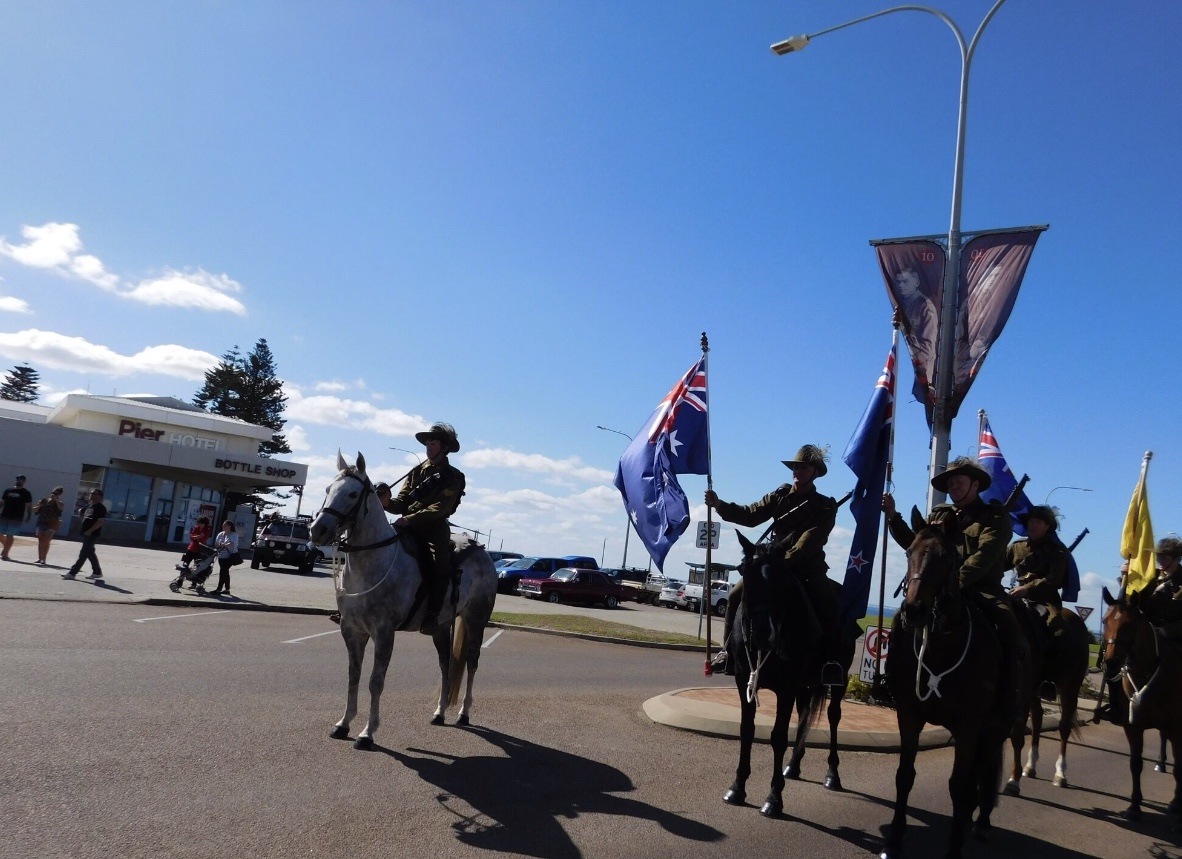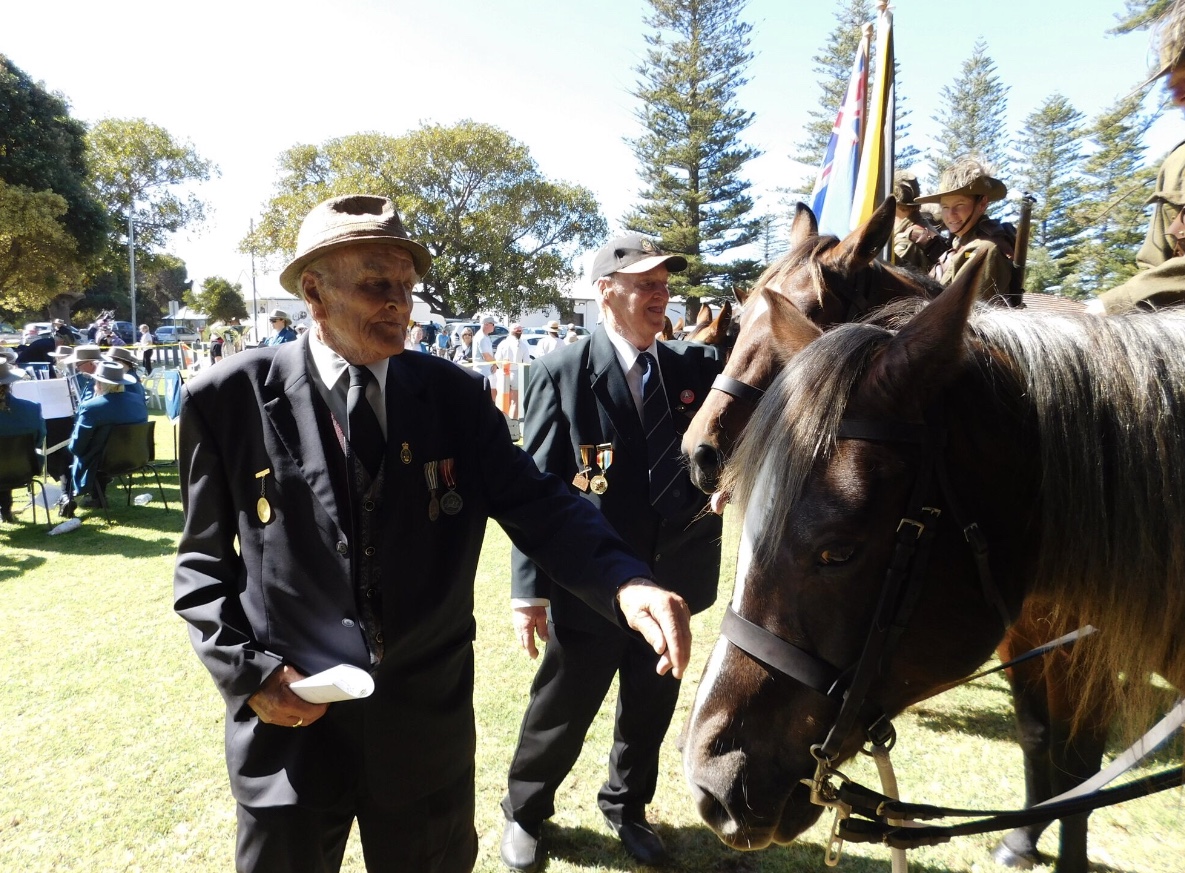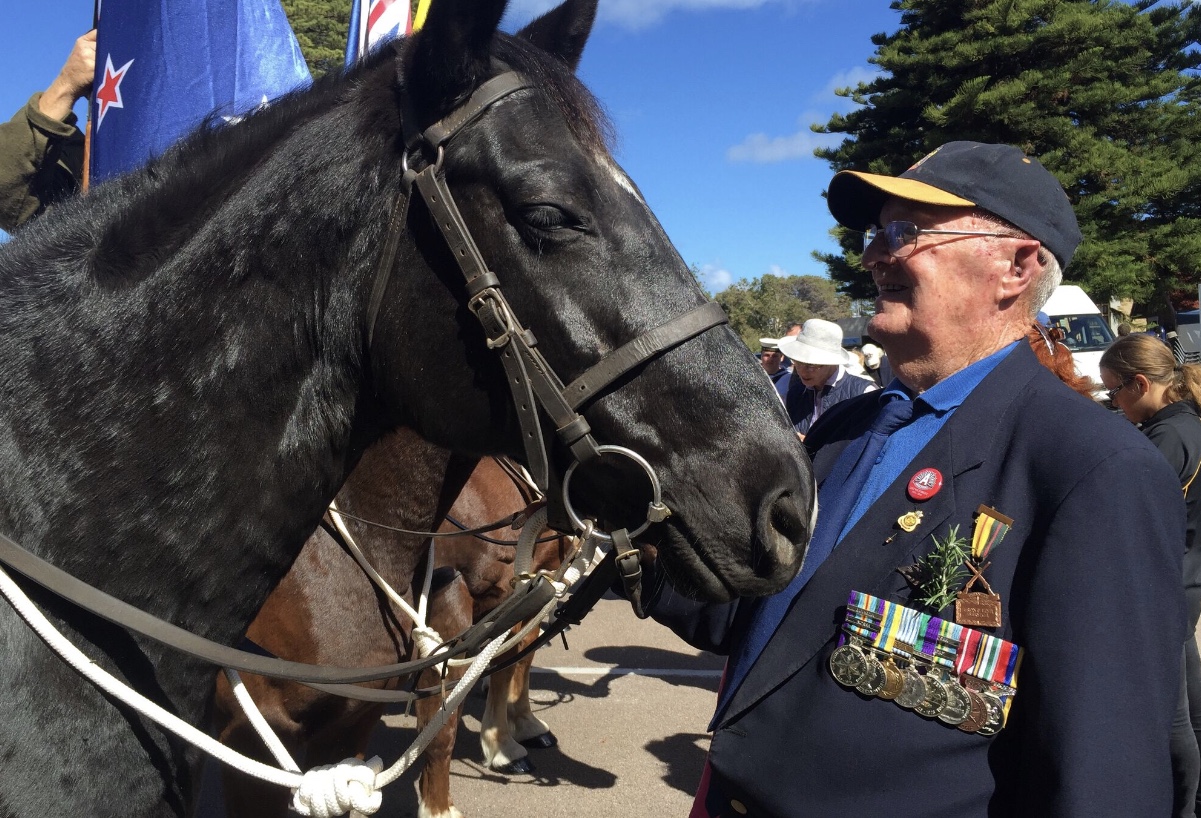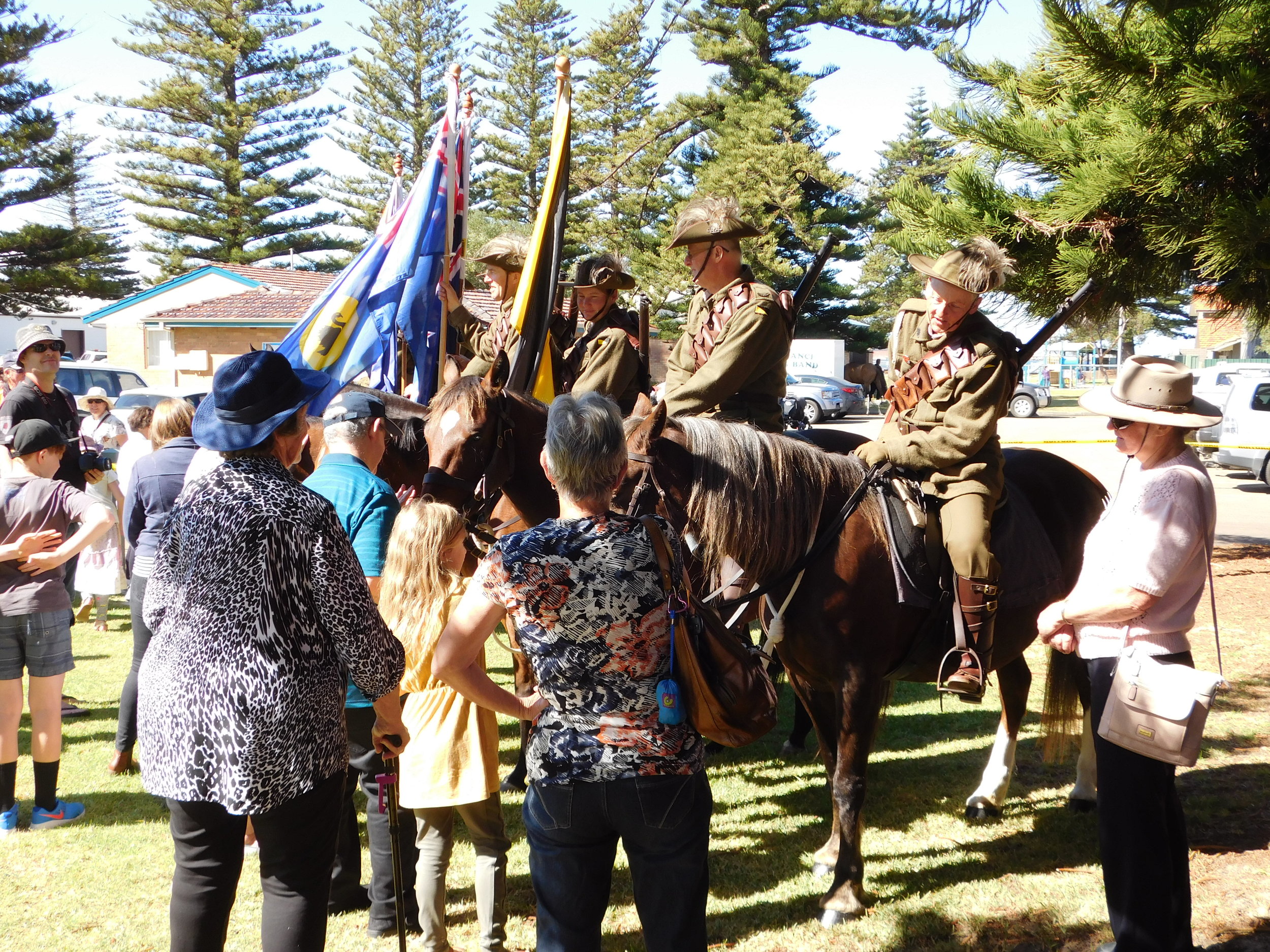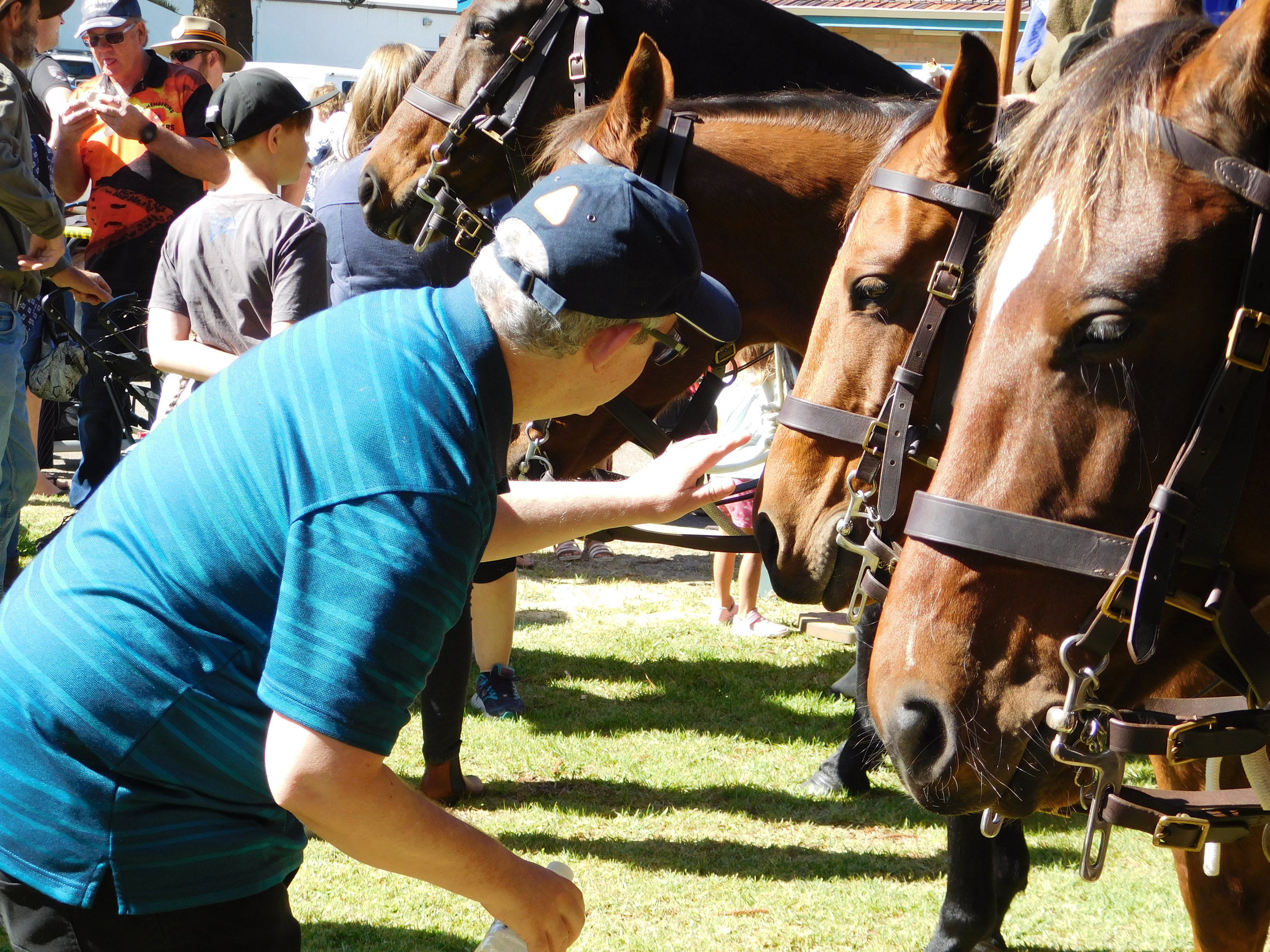THE NOBLE ONES
Written and photographed by Dorothy Henderson
It is 4.50am. Hooves shuffle quietly in the dark, seemingly muffled by the blackness. Flashlights and headlamps move slowly around a small cluster of horse floats and cars parked on a portion of unseasonably green grass in the middle of Esperance. Gentle laughter sprinkles in the cold air as leather straps are pulled tight over boots, girths are buckled; spurs jingle and bits tinkle as horses and riders prepare for the town’s annual ANZAC Day Dawn Service.
Saddles, bridles, uniforms, emu-feathered slouched hats…before long the transformation is complete and the 10th Light Horse Esperance Troop is ready to move. This morning’s exercise is more like a quiet amble than a brisk march: the car park the troop is preparing in is literally a stone’s throw from the memorial and grassed area where the service will be held. As the horses gather in a line the sombre nature of the occasion is enhanced by the gloom of the pre-dawn day.
This is the fourth year that the troop has taken part in ANZAC Day ceremonies in Esperance. Formed in 2016 when the world marked the 100th Anniversary of the World War One years, the troop is made up of local horse people, from different walks of life. Much as the original Light Horse members were. The horses in the troop are like those that were dispatched to the Middle East, stock horse, quarter horse, Welsh cob, Thoroughbred - the army drew its mounts from a wide pool of equines.
When the bugle sounds, and the blessing is given, the troop is at ease and the horses untacked. There is some chatter, cheerful banter as the horses and riders wait for the ANZAC Day Parade and second service to be held later in the morning. Horses are fed, people eat breakfast, and more horses and riders arrive. The sun is higher in the sky and the atmosphere is lively; not because the occasion is a necessarily a happy one, but because of the camaraderie that is an inevitable part of any gathering of kindred.
Veterans in impressive suits bedecked with medals start to meander towards the parade route, and uniformed police and town officials block off streets. Gathered behind a group of children who will later sing the New Zealand National Anthem, the Light Horse Troop is in formation, waiting to march through the main streets that are normally dominated by horsepower of a modern kind. Cameras click as the horses attract attention and it’s hard not to admire the steady animals who tolerate the noise and commotion with the same ease that the light horse tolerated war. Their calm brown eyes see all and react to nothing.
As the horses line up alongside a group of sitting children, fidgeting and excited, those of us who are with the troop as horse handlers are anxious. We have in our sight a line of 500-kilogram horses surrounded by people (including wee ones on the ground), noise, loud speakers, rows of plastic chairs, and a brass band to the front and flapping flags to the side. We know there is no such thing as a bombproof horse.
And yet the horses stand still. One twitches at a fly, and there is an anxious moment when one child cannot contain his energy any longer and makes a dive directly in line with the hind quarters of one horse. But the accident that could happen did not. The horses hang their heads in a relaxed pose and the flags flutter among and above them. Even when the .303 rifle is fired, they barely flinch. We are overcome by their obliging nature and reminded of their greatness in conflict. Behind us a mural depicts the charge at Beersheba, when the charging horses overran Turkish machine guns to capture the town and its important wells. War is not an inspiring thing, but the people, the horses and their stories often are.
After the service, there is a predictable pause while people unwind from the formal portion and absorb the end of reflection. And then, like bees to a honey pot, they gravitate towards the horses. Stroking noses, patting necks, staring into their eyes - this is what makes the early morning worthwhile. This interaction between people and horses who do not know them: it is precious and a reminder of how lucky those of us are who work with them every day.


